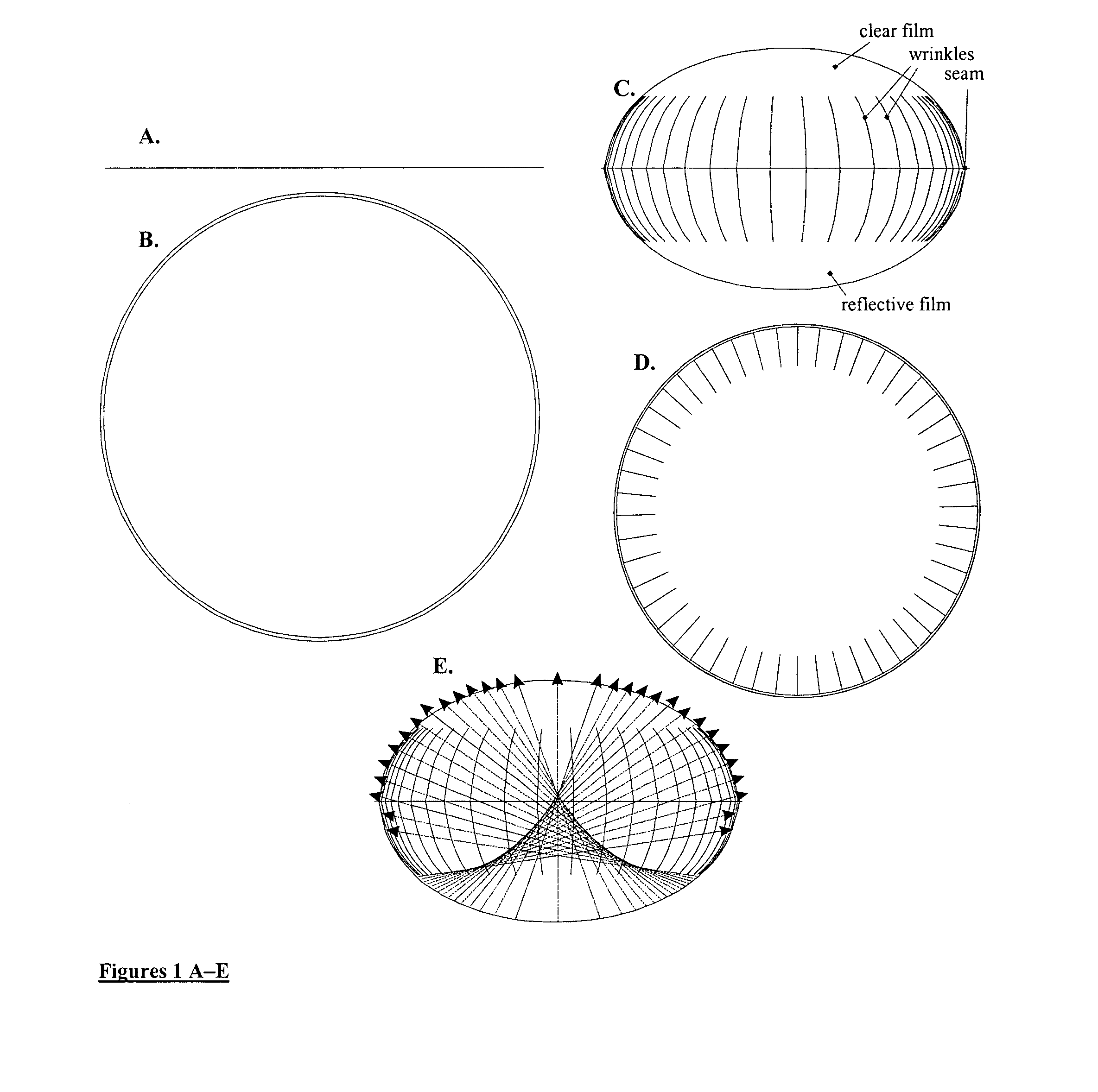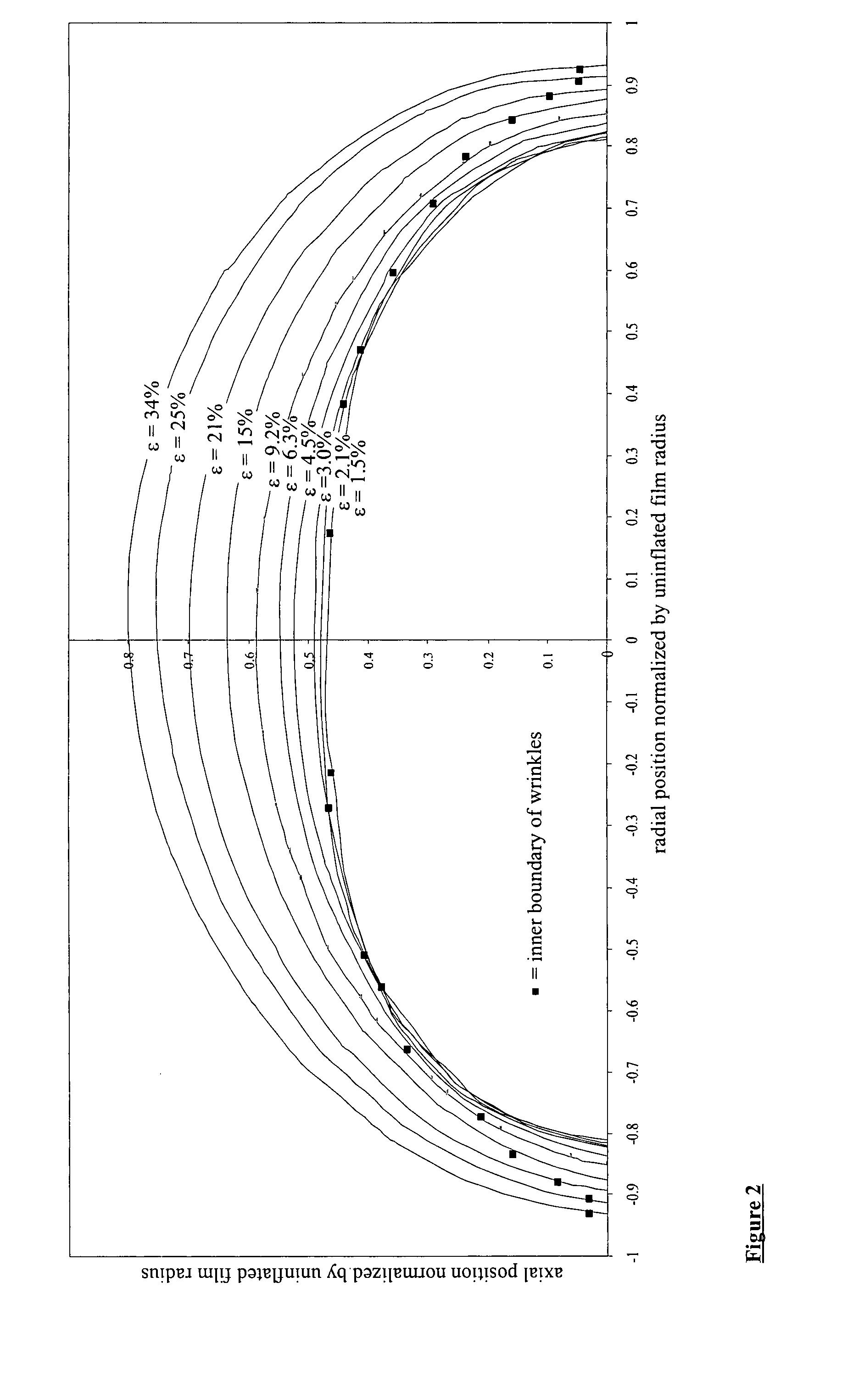Inflatable solar concentrator balloon method and apparatus
a concentrator and balloon technology, applied in the direction of collapsible antenna means, lighting and heating apparatus, transportation and packaging, etc., can solve the problems of affecting the use of land below the modules and potentially increasing the environmental impact of solar installation, so as to facilitate feedthroughs, reduce stress concentration, and modify the inflated shape
- Summary
- Abstract
- Description
- Claims
- Application Information
AI Technical Summary
Benefits of technology
Problems solved by technology
Method used
Image
Examples
embodiment 1
[0121]FIGS. 1A-B show views of an embodiment of an inflatable solar energy concentrator in accordance with the present invention. FIGS. 1A and 1B respectively show elevation and plan views of the substantially flat, uninflated films. The relative flatness and thinness of the uninflated films facilitates manufacturing and distribution. FIGS. 1C and 1D respectively show elevation and plan views of the inflated films. These views are based on actual measurements and accurately depict the film shape and extent of wrinkling. FIG. 1E shows where rays propagating downward parallel to the axis of the balloon (not shown) reflect after hitting the reflective film. The rays concentrate along the balloon axis, with a peak concentration near the center of the balloon. The rays diverge quickly on leaving the balloon and thus pose no external fire hazard.
[0122]The profile and boundary of the wrinkle zone depends on the balloon strain. FIG. 2 shows measured profiles of the balloon cross-section for...
PUM
 Login to View More
Login to View More Abstract
Description
Claims
Application Information
 Login to View More
Login to View More - R&D
- Intellectual Property
- Life Sciences
- Materials
- Tech Scout
- Unparalleled Data Quality
- Higher Quality Content
- 60% Fewer Hallucinations
Browse by: Latest US Patents, China's latest patents, Technical Efficacy Thesaurus, Application Domain, Technology Topic, Popular Technical Reports.
© 2025 PatSnap. All rights reserved.Legal|Privacy policy|Modern Slavery Act Transparency Statement|Sitemap|About US| Contact US: help@patsnap.com



